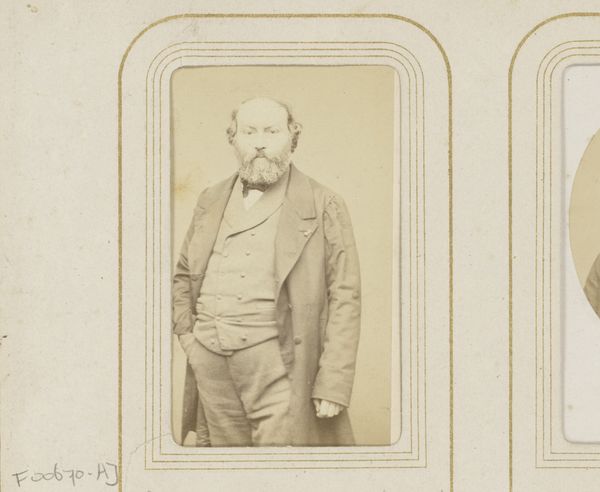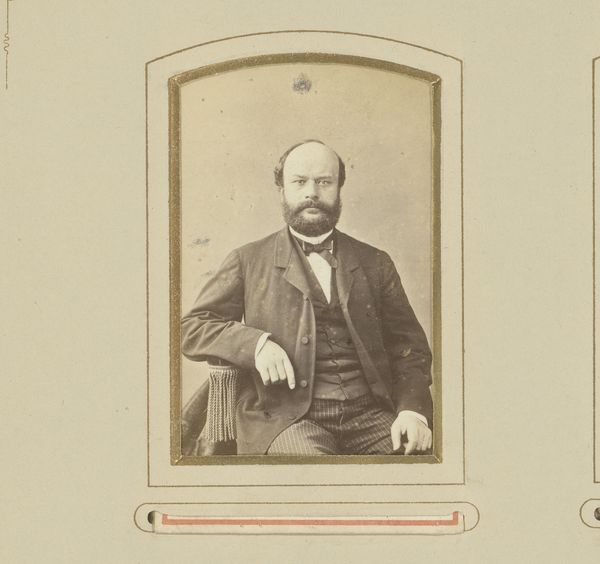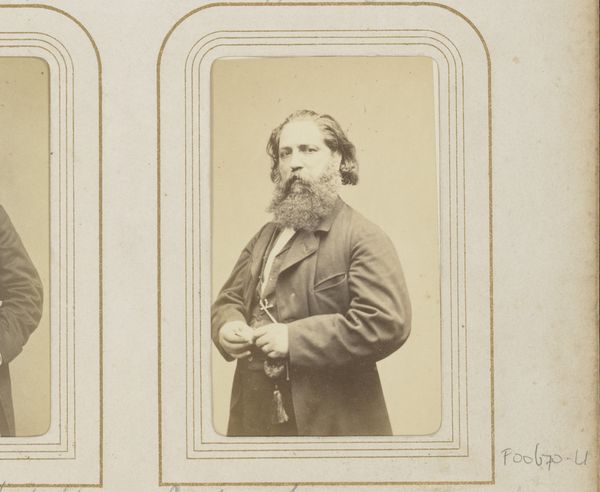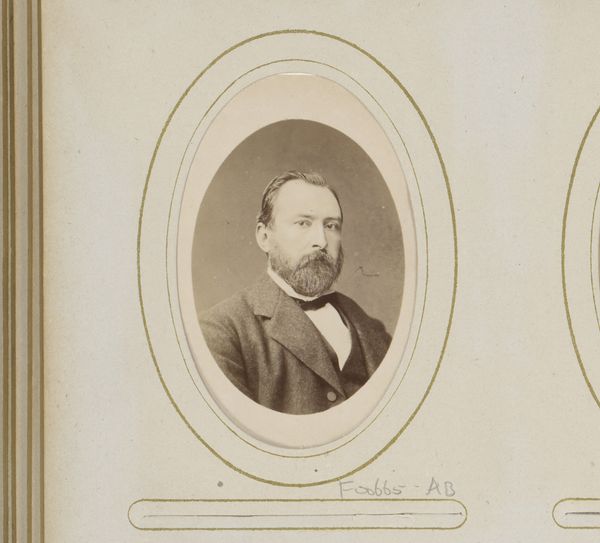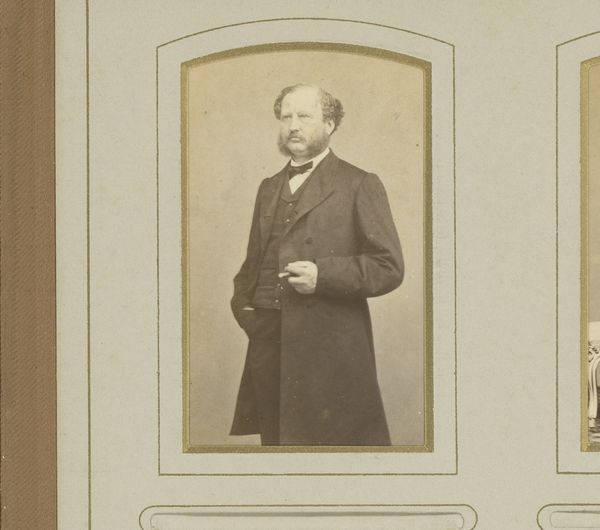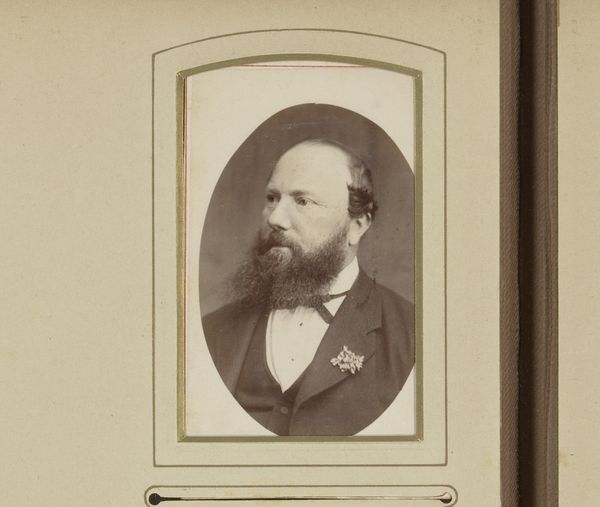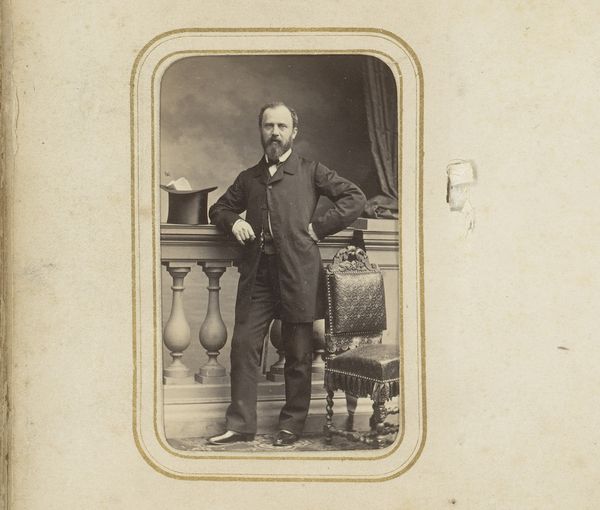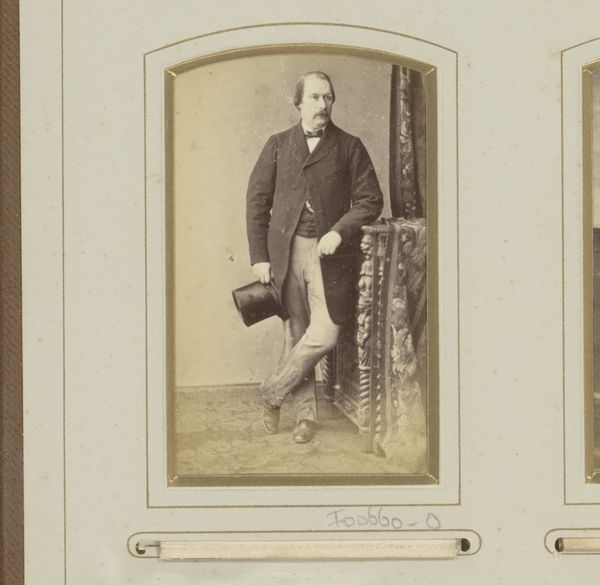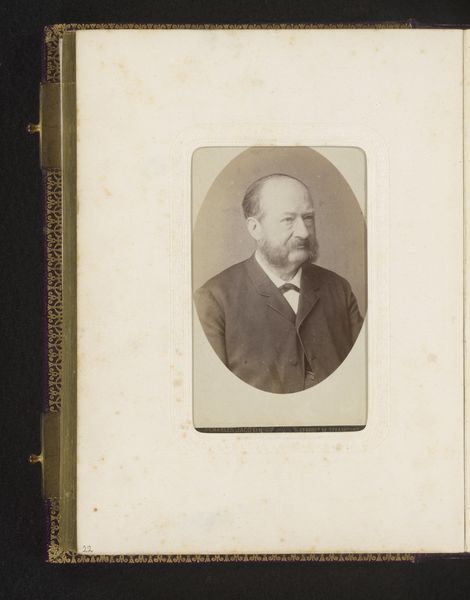
Dimensions: height 84 mm, width 51 mm
Copyright: Rijks Museum: Open Domain
Curator: Before us, we have a gelatin silver print dating from 1867 to 1871, a portrait of Karl Girardet. Editor: The subdued tonality immediately strikes me, almost sepia-like. You can practically feel the weight of that frock coat draped over his arm. Curator: Indeed, the texture is quite remarkable for photography of that era. It brings to mind the rise of realism during that period, alongside photography offering almost mechanical reproductions of a subject. But I’m more drawn to the man himself. He is staring with piercing eyes towards something slightly aside of us, with this almost pensive aura, as though the artist wished us to reflect upon Girardet’s persona as much as his appearance. Editor: Absolutely, yet the realism comes down to materials, doesn't it? A silver gelatin print… think of the chemistry, the glass plates, the darkroom processes that make this "realistic" image. It’s constructed materiality imposing a perspective on history and even how we are perceiving realism. It begs the question: who produced the materials to produce such photographs? Curator: True, and there's the composition itself. He's carefully positioned with the hat in hand almost an explicit invitation, as hats in portraits symbolize status but, even beyond, access or the key to other societies... What sort of societies was Karl interested in granting us access to? What might he have been involved in? Editor: I suppose access was defined differently then. Perhaps this image was more for immediate personal or bureaucratic circulation. Still, it's remarkable how this technique –silver salts, light, and skilled labor – transforms Girardet into both symbol and material artifact. And considering its age, you can feel the hand of the workers during the period with how the photograph has maintained. Curator: It brings forth interesting connections across time; photographic techniques may shift, but the underlying urge to memorialize persists. I still think there's this almost romanticized ideal, a yearning captured within its aesthetic. Editor: And perhaps understanding the material circumstances lets us deconstruct the mythmaking that may also occur through art. Ultimately, it lets us appreciate the image both as it appears and as a product. Curator: Yes, between the symbolism and production of an object. Editor: Indeed.
Comments
No comments
Be the first to comment and join the conversation on the ultimate creative platform.

